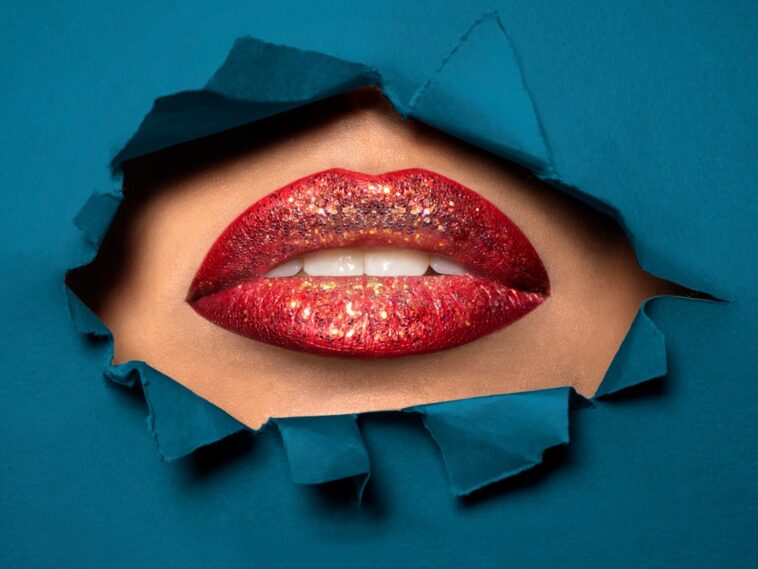So, you want to learn how to draw lips? Awesome! Drawing lips can seem tricky at first, but with a little practice and understanding of the basic shapes, you’ll be sketching beautiful pouts in no time. This guide will break down the process into easy-to-follow steps, perfect for beginners and those looking to improve their skills. We’ll cover everything from basic shapes to adding details that make your lip drawings look realistic and expressive.
Gather Your Supplies
Before we dive in, let’s make sure you have everything you need. Luckily, you don’t need a ton of fancy art supplies to get started. Here’s a basic list:
- Pencil (a regular #2 pencil works great!)
- Eraser (a kneaded eraser is ideal for lifting graphite without damaging the paper)
- Paper (sketchbook paper or printer paper is fine for practicing)
Optional supplies that can be helpful as you advance include:
- Different grades of pencils (e.g., 2B, 4B for shading)
- Blending stumps or tortillions (for smooth shading)
Now that you’re equipped, let’s get started!
Step 1: The Basic Shapes – The Foundation of Your Lips
Every great drawing starts with basic shapes. For lips, think of three simple shapes: a central horizontal oval or rectangle and two smaller ovals or rectangles above and below it. These shapes will form the overall structure of the lips.
Lightly sketch these shapes onto your paper. The central shape represents the part of the lips where they meet, the “lip line.” The top and bottom shapes represent the upper and lower lips, respectively. The size and proportion of these shapes will greatly influence the final look of your lips, so pay attention to their relative size and positioning.
Step 2: Refining the Lip Line – Giving Form to Your Drawing
The lip line is arguably the most important part of drawing lips. It’s what defines the shape and expression. Within the central oval/rectangle you drew, sketch a wavy or curved line. This line doesn’t need to be perfectly symmetrical. In fact, a little asymmetry will make your lips look more natural and realistic.
Pay attention to the Cupid’s bow – that little dip in the center of the upper lip. Some people have a very pronounced Cupid’s bow, while others have a softer curve. Observe references of real lips to understand the variety and how to create that shape.
Now, connect the corners of the mouth to the ends of the lip line. These lines will form the edges of the lips where they meet the face. Think about how the lips curve slightly inward towards the mouth corners.
Step 3: Shaping the Upper and Lower Lips – Adding Volume and Dimension
Now it’s time to refine the shapes of the upper and lower lips. Use the ovals/rectangles as guides, but don’t be afraid to adjust them. Remember that lips aren’t perfectly flat; they have volume and curves. The lower lip is generally fuller than the upper lip, so keep that in mind as you draw.
Lightly sketch curved lines that connect the lip line to the outer edges of the upper and lower lip shapes. These lines should follow the natural curve of the lips. Again, observe real lips or reference photos to see how the light and shadows play on these curves.
Step 4: Erasing Guidelines and Refining the Outline
Once you’re happy with the overall shape of the lips, gently erase the initial guidelines you drew in steps 1-3. This will clean up your drawing and allow you to focus on the final details. Go over the outline of the lips with your pencil, making the lines cleaner and more defined. Vary the thickness of the lines slightly to add depth and interest. Thicker lines can indicate areas of shadow, while thinner lines can suggest highlights.
Step 5: Shading – Bringing Your Lips to Life
Shading is what will truly bring your lip drawing to life. It creates the illusion of volume and dimension, making the lips look more realistic. Observe how light falls on real lips and try to replicate that in your drawing.
Start by identifying your light source. Where is the light coming from? The areas that are closest to the light source will be the brightest, while the areas that are furthest away will be the darkest. Use your pencil to lightly shade the darker areas of the lips. Common areas to shade include the corners of the mouth, the area under the lower lip, and the inner part of the upper lip.
Use a blending stump or tortillion to smooth out the shading and create a more gradual transition between light and dark. If you don’t have a blending stump, you can use your finger (but be careful not to smudge the graphite too much!). Add highlights by using your eraser to lift graphite from the brightest areas of the lips. This will create a contrast that makes the lips look more three-dimensional.
Step 6: Adding Details and Texture – The Finishing Touches
To make your lip drawing even more realistic, add some subtle details and texture. Lips aren’t perfectly smooth; they have small wrinkles and lines. Lightly sketch these details onto the lips, paying attention to the direction and flow of the lines. Vertical lines are common, especially on the lower lip. These should be very subtle. A little goes a long way.
Consider adding a cast shadow from the upper lip onto the lower lip. This will further enhance the sense of depth and realism.
Practice and Experimentation
The key to mastering lip drawing is practice, practice, practice! Don’t be discouraged if your first few attempts aren’t perfect. Keep practicing and experimenting with different shapes, shading techniques, and details. Look at lots of reference photos of real lips. Study the subtle curves, the way the light falls on them, and the way they express different emotions. Over time, you’ll develop your own style and learn to draw lips that are both beautiful and expressive.
Tips for Drawing Realistic Lips
- Observe Real Lips: The best way to learn how to draw realistic lips is to study real lips. Pay attention to the shapes, curves, and details.
- Use References: Don’t be afraid to use reference photos. They can be a valuable tool for understanding the anatomy of the lips and how light and shadow work.
- Start Lightly: Begin by sketching lightly and gradually build up the details. This will allow you to make corrections easily.
- Don’t Overdo It: Less is often more when it comes to details. Too many details can make your lip drawing look cluttered and unnatural.
- Experiment: Try different shading techniques and pencil grades to find what works best for you.
Frequently Asked Questions
How do I draw lips from different angles?
Drawing lips from different angles requires understanding perspective. Imagine the lips as a cylinder that is being viewed from different positions. Practice sketching the basic shapes of the lips from various angles, paying attention to how the proportions change. Reference photos are especially helpful for this.
How do I draw different types of lips (e.g., thin lips, full lips)?
The main difference between drawing different types of lips is the proportion of the shapes. For full lips, the upper and lower lip shapes will be larger and more pronounced. For thin lips, the shapes will be smaller and less defined. Pay attention to the overall balance and harmony of the lips within the face.
What are common mistakes to avoid when drawing lips?
Common mistakes include making the lips too symmetrical, neglecting the Cupid’s bow, and using harsh, dark lines. Remember that lips are organic and have subtle curves and imperfections. Avoid over-shading or under-shading, and pay attention to the light source to create realistic shadows and highlights.
How do I draw expressive lips?
Expressive lips can convey a wide range of emotions. The key is to pay attention to the subtle changes in the shape of the lips and the surrounding muscles. Experiment with different positions of the lip line and the corners of the mouth to express different emotions like happiness, sadness, or anger.
Drawing lips is a rewarding skill that can enhance your artistic abilities. By understanding the basic shapes, mastering shading techniques, and practicing regularly, you can create stunning and realistic lip drawings. So grab your pencil, start sketching, and have fun!



GIPHY App Key not set. Please check settings